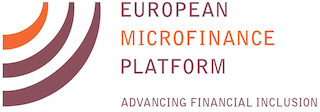 Global food security had been increasing before the COVID-19 pandemic and the invasion of Ukraine by Russia. People with low incomes were becoming more able to access – both in terms of cost and distance – a range of foods such as grains and fresh produce on a year-round basis. However, during the first year of COVID-19, 47 million women fell into extreme poverty, reducing their – and their children’s – access to nutritious food. When families don’t have enough food, women often eat the least. Girls are usually the first to be pulled from school to redirect scarce cash to buying food.
Global food security had been increasing before the COVID-19 pandemic and the invasion of Ukraine by Russia. People with low incomes were becoming more able to access – both in terms of cost and distance – a range of foods such as grains and fresh produce on a year-round basis. However, during the first year of COVID-19, 47 million women fell into extreme poverty, reducing their – and their children’s – access to nutritious food. When families don’t have enough food, women often eat the least. Girls are usually the first to be pulled from school to redirect scarce cash to buying food.
One positive trend is that financial regulators are starting to think about food security. They are realizing that food security is closely tied to the stability of financial systems. Also interrelated are climate change, gender equality and financial inclusion.
When smallholder farmers have access to finance, they are more able to invest in better seeds and fertilizers. Often this means organic fertilizer, now that chemical fertilizers have become much more expensive due to the war in Ukraine. Farmers are more likely to invest in their farms when they can access loans to cover the cost. They also may be more willing to do so as they gain access to microinsurance, because they will be less likely to lose their investment if the weather is extreme. In rich countries, governments often subsidize crop insurance, but this idea is just now spreading in low- and middle-income countries. For example, lenders in Thailand are offering subsidies for insurance when farmers borrow, thus de-risking both the farmers’ investments and those of the lender.
Parametric insurance is the most common crop insurance in low- and middle-income countries, although it still is not allowed in some countries. The growth of index insurance has been facilitated by the mobile money accounts that many people opened in 2020 to receive pandemic support payments. This has reduced the cost of insurance in some markets.
Another challenge is food waste. One company in Kenya is delivering mobile cold storage units to farmers at harvest time, reducing food waste by 40 percent. Meanwhile, the UN’s World Food Programme (WFP) has found a way to reduce another type of waste. When the organization delivers food to those in need on an emergency basis, 47 percent of funds are spent on logistics, meaning 53 cents of each dollar gets to people in the form of food. Instead, WFP is moving toward giving people cash to buy their own food, cutting the logistics overhead to 19 percent. This also has the advantage of allowing people to use the money for other purposes. When people were given food but actually had more urgent needs, such as mosquito nets or medicine, they often resold the food they had been given at very low prices. Looking forward, WFP plans to focus on delivering cash assistance to women, in particular, as studies show that women tend to invest more in their families than do men.
This report is part of a sponsored series on European Microfinance Week 2023, which took place in Luxembourg from November 15 to 17. MicroCapital has been engaged to promote and report on the event each year since 2012. Stay tuned over the coming days for more news from the conference! Learn more about European Microfinance Week at https://www.emw2023.eu/.
Additional Resources
Inclusive Finance for Food Security & Nutrition: Lessons and Best Practices from the European Microfinance Award 2023
https://www.emw2023.eu/resources/inclusive-finance-food-security-nutrition-lessons-and-best-practices-european-microfinance
European Microfinance Week 2023 homepage
https://www.emw2023.eu/
European Microfinance Award homepage
https://www.european-microfinance-award.com/
MicroCapital coverage of European Microfinance Week since 2012, including the European Microfinance Award
https://www.microcapital.org/category/european-microfinance-week/
Similar Posts:
- SPECIAL REPORT: Yikri of Burkina Faso Wins $110k European Microfinance Award for Progress Toward Food Security #EMW2023
- SPECIAL REPORT: Solar-powered Onions in Senegal, Meso-insurance Against Storms in Nicaragua, Performance-based Interest Rate Reductions for Climate-smart Lending in India
- SPECIAL REPORT: Banco FIE of Bolivia Takes $100k “Financial Inclusion that Works for Women” European Microfinance Award 2022
- SPECIAL REPORT: Christoph Pausch on the European Microfinance Award 2023 – Inclusive Finance for Food Security & Nutrition
- MICROFINANCE EVENT: European Microfinance Week; November 15-17, 2023; Luxembourg
